I am fascinated by eastern European Bee Houses. I do not know much about them, so if you do, please share your wisdom. The mobile ones seem like such a wonderful elegant solution to moving small numbers of bees around: everyone goes together. Plus, stationary or moving, they are really lovely.
The bee houses come in all shapes and sizes. The image at the top of this blog is, apparently, the hives of a church in Gradišče Pijavo Gorizia, Slovenia (Should any of the words or locations be wrong, please correct them. I’m working off of a translation program.)
A friend, Lisa, at RoundTuIt Farms shares my enthusiasm. She has a stationarybee house into which she moves her hives each winter. Visit her bee page for more photos. It’s wonderful, but she and I are facinated by the bee houses in which the bee hives remain year round.
I think I love the European ones for their colors and paintings. The idea that the hives stay put is nice too. These are from the “Location Slovenia” website. There is a “Learning Trail” at the Information Center Park Caves, near Divaca Hrpelje Kozina.
The trail covers both cultural and natural history themes – which makes beekeeping a perfect match. More images of hives and houses from multiple sources can be found HERE.
They’re lovely to look at, but Lisa and I have always wondered: how do they work. I recently discovered some websites that gave a look inside the hive.
This image is from a fellow who goes by atlanticmaster (that’s all I could find on him). From what I can see, each of the hives opens from the back and the frames slide out. None of the hives are more than 2 boxes. He has a nice slide show of his hive at this link.
I particularly like the way he included a “well that one didn’t work so well” photo. Too often we tend to show only what works. The “oops” are often far more instructional and inspirational.
These are from a Carniolan beekeeper’s site and show how the hives could be created.
His apiary in Upper Carniola (near Jelovica). At the time of his postings, the beekeeper was running 12 hives. I tried to contact the beekeeper, but sadly the message was returned: the old “this address has a fatal flaw” message. What a shame. It is a great website, even reading it though a translation program. Of course, website that starts off with a brandy recipe has my heart. He does go on to deal with varroa, oxalic acid, what beekeepers in his are do at different times of year…but it all dates from 2006.
Another view of the interior of a bee house is from B & S Budija Production of beehives and beekeeping equipment and laboratory dentistry (B & S Budija sp-Izdelava panjev in čebelarska oprema ter zobotehnični laboratorij). I think the slated board between the two supers are interesting. Perhaps it is to add more ventilation to the hive? I like the name of his company as well, especially the density at the end. After all if you go to our farm website (Walking-Wild.com), you find beekeeping, honey, handcrafted furniture, DVDs, and photography. Got to diversify in this world.
His hives would seem to be for sale, although it is a bit far to pop round and get one, but they are well made : “The hives are made from high quality spruce, which is technically in an industrial kiln dried at elevated temperatures and properly conditioned at 12% humidity.” Hop onto the site for more photos including nucs made in this form.
It’s probably too far to go to buy the hives, but you can build them. Dr. Janko Božič offered a nice diagram of his hives. He apparently ran a beekeeping training center (in Ljubljana?) but stopped the center in 2000 with a heart breaking message:
“The Beekeeping training is left to the fate of time to April 2000th I hope someone will continue the raised work and beekeepers offering modern methods of holistic education. Personally, I forwarded the initiative on Beekeeping.” Makes me want to weep.
My translation program gives these definitions of the keys:
- B = back
BS: brood
BW plodiscno box (you figure)
D doors
F: front
HS medisce (treatment area?)
HW medicno box (same?)
IF inner front
QE the parent grid (queen excluder?)
OK, it’s not much of help, but it’s a start
The one downside of these hives would seem to be the necessity of constantly pulling honey, Taylors Garden Buildings in the U.K. has a solution to that:
It’s not quite the same; their focus on making beekeeping practical for the elderly and the young. They’re based in based in Finsbury Park, London. The company’s main business is building sheds, from the incredibly practical to the outstandingly elegant. These seem to use the hives based on Langstroth hives, but the sheds could easily be merged with the Eastern European style of boxes.
That’s the tour inspired by a very wet day at Brookfield Farm Bees And Honey, Maple Falls, Washington.
If you use or know more about these wonderful hives, especially how to build them, how they are “supered”, and how honey is harvested from them, please share information and links. I think there’s a place for these in many of our apiaries.

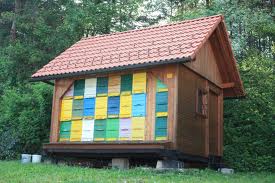


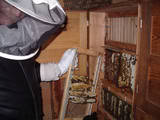


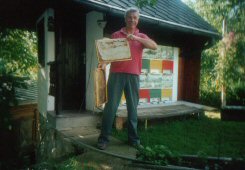


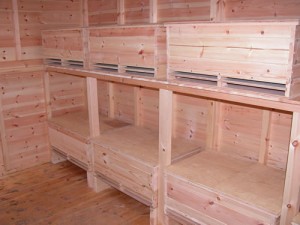
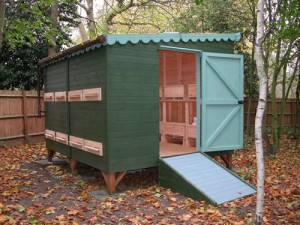
2 Responses to Bee Houses – from eastern Europe to Oak Harbor, WA